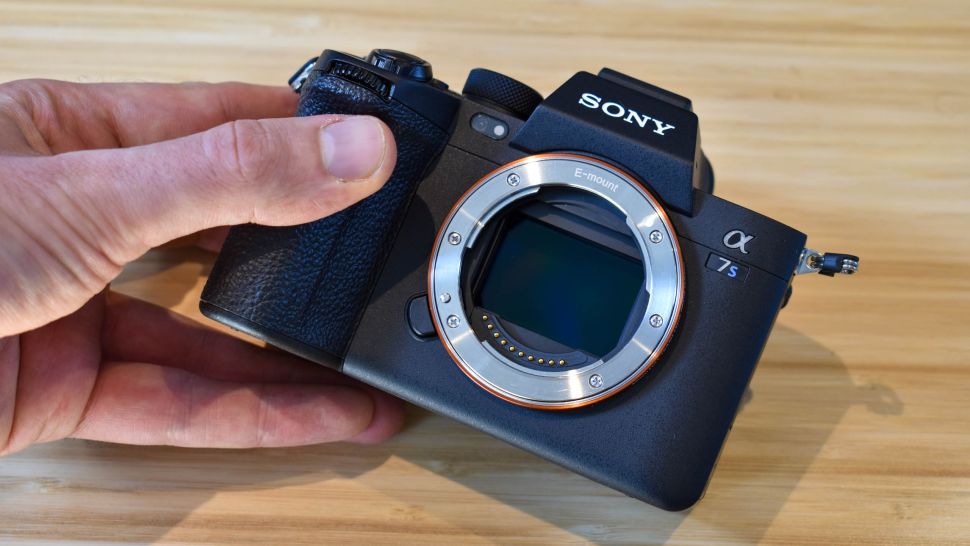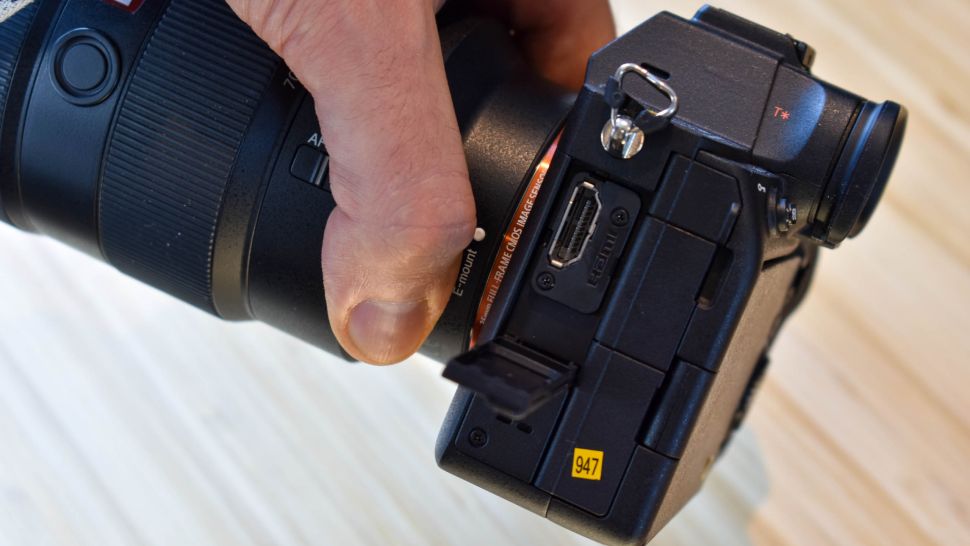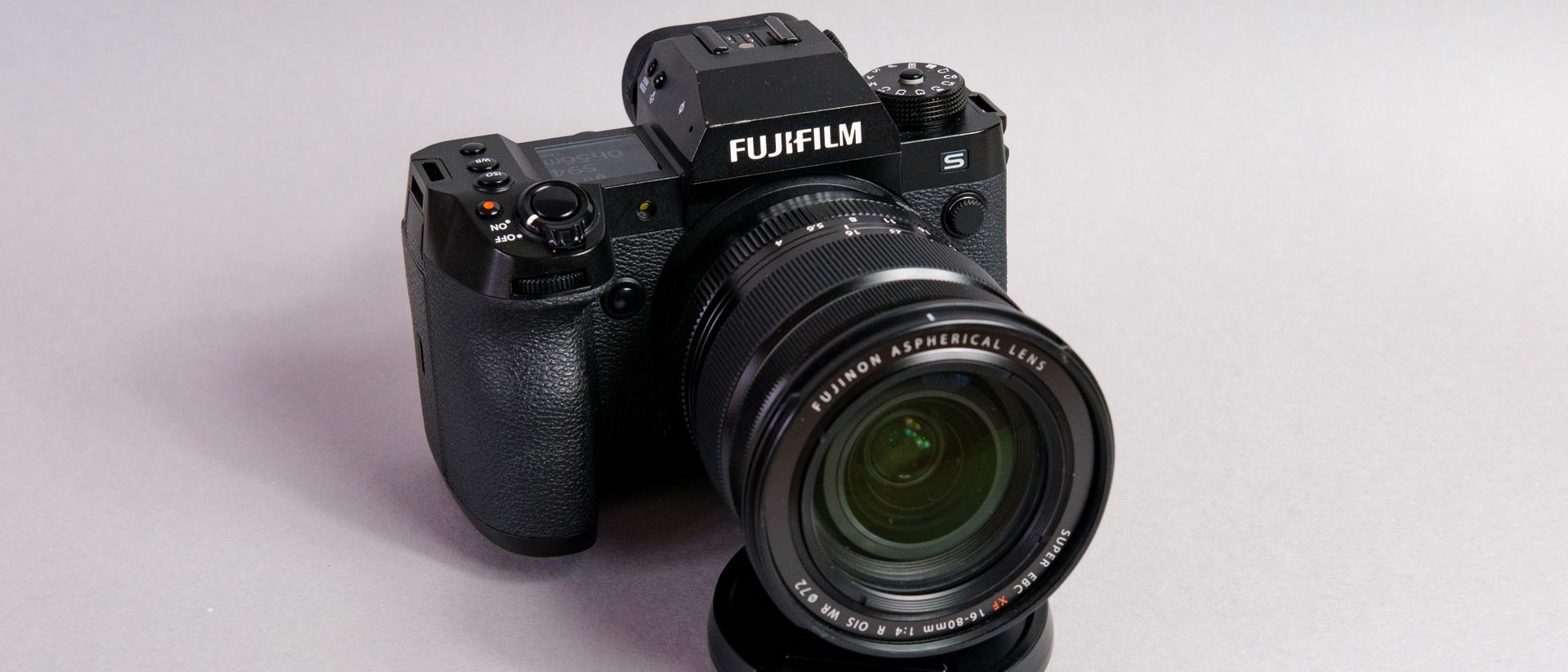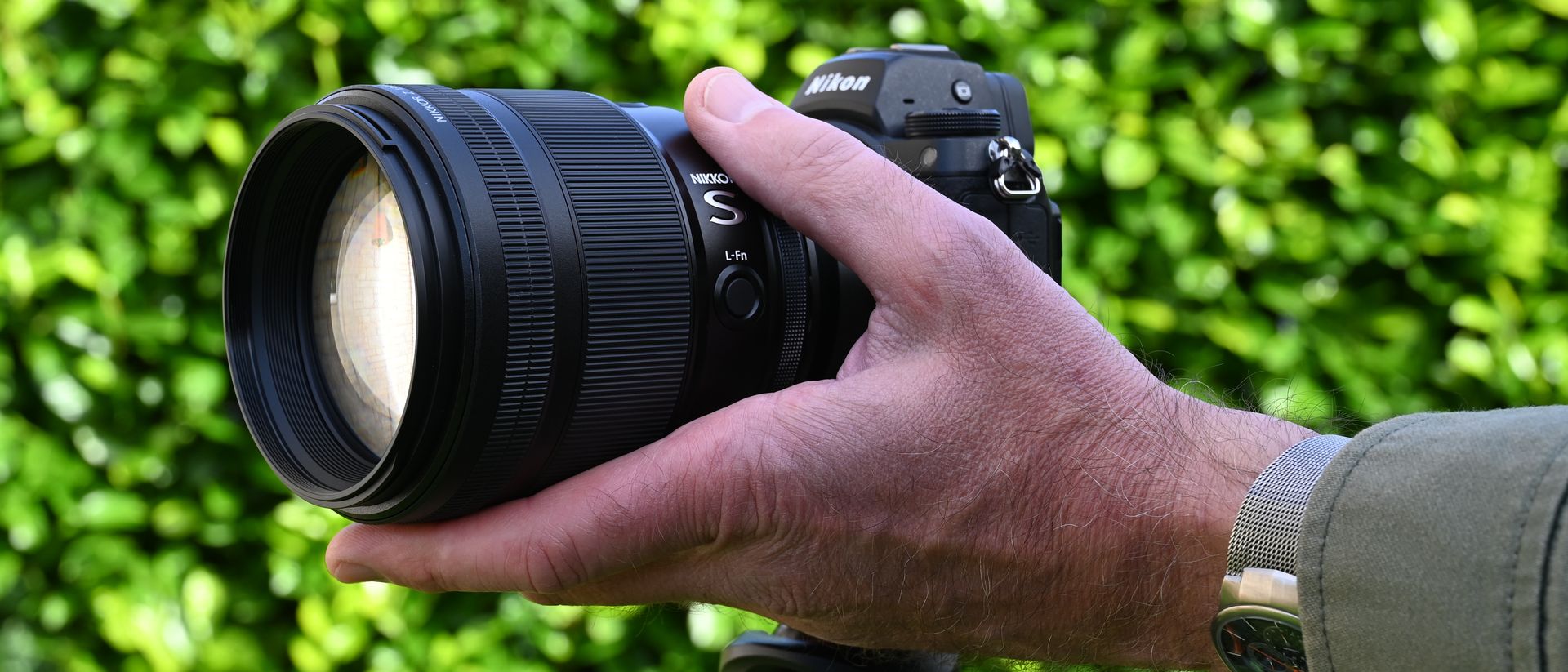Trade in Sony A7S III

(Image credit: Future)
Two-minute review
The Sony A7S III is finally here, and boy does it deliver. With huge improvements to handling and connectivity, a pin-sharp viewfinder, and, of course, hugely impressive low-light performance across both video and stills, it’s the finest hybrid video camera you can buy.
Of course, this all comes at a price, with the A7S III costing $3,498 / £3,800 / AU$5,999 for the body only. But, thanks to a long-awaited new 12.1MP back-illuminated full-frame sensor, it’s a best-in-class low-light 4K video camera, and with an also-new Bionz XR processor that brings 8x faster performance and an expandable ISO of 40-409,600, not to mention a class-leading 15 stops of dynamic range, the specs definitely impress.
The fully articulating screen is one of the many other stars of the A7S III show. Sony teased this on the Sony ZV-1, but now it’s finally made its way to an A7-series camera. Perhaps an even bigger deal for frustrated Sony fans is that it’s finally opted for a full touch UI, making interaction with the camera much more intuitive.
Being a Sony camera, the A7S III also delivers excellent, customizable autofocus, with 759 phase-detection AF points and eye-tracking across animals and humans, which Sony claims to be 30% faster than on the A7S II. This is combined with in-body image stabilization (IBIS) and Active stabilization, which marries optical and electronic systems with a small crop-factor.
The 12.1MP sensor resolution means the A7S III can’t record 6K, let alone 8K, video, instantly putting it behind much of the competition in terms of outright resolution. What it can do, though, is record for a very long time, and in very low light. That’s the key reason you’ll be picking up an A7S III, which wiped the floor with the admittedly (much) cheaper Blackmagic Pocket Cinema Camera 4K in our tests.
We are Tradelectronics, licensed second-hand electronics dealer located in Sydney CBD, experts in trading used laptops, old cameras & lens, and used mobile phones. Fast, Reliable & We Pay More! Get a free quote on your favourite WhatsApp, Facebook, SMS & Email, instant reply!
| Click icon for WhatsApp Quote | Click icon for facebook Quote |
 |
 |
- We are open from Mon – Sat 12pm – 7pm
- Get your free quote from WhatsApp and Messenger are highly recommended, we can guide you through in finding the accurate specs for your laptops, cameras & lens, mobile phones as well. As such we can provide a more precise quote for you.

(Image credit: Future)
With images captured at sensitivities between ISO 2000-4000 looking like they were shot nearer 200-400, the A7S III is a liberating camera to use, and, naturally, you can boost the ISO much higher. Even when we set the ISO in excess of 40,000, it still produced usable footage for certain types of video.
Sony has also improved focus speeds on the A7S III, and it partly puts this down to the sensor sensitivity performance, which enables the camera to identify subjects in lower light than sensors with inferior sensitivity.
This is more than just a video camera though, and stills captured indoors look stunning, with simple incidental shots in dimly lit environments exhibiting an ambience and clarity usually missing from out-of-the-camera photos.
When it comes to power, the new Z battery delivers what Sony claims to be a 60% performance improvement over the Sony A7S Mark II‘s NP-FW50, which translates to up to 95 minutes of video capture, on paper. While we had a fair amount of variability in our device’s battery life, it comfortably captured 4K video for in excess of 75 minutes in our tests, which is great going compared to much of the competition.
The sticking point with the A7S III is always going to be price – it’s a hefty investment, especially if you want to couple it with decent glass and fast storage – but the camera itself is the best in its class.
Sony A7S III release date and price
- Retails for $3,499 / £3,800 / AU$5,999
- Launched September 2020
The A7S III was released in September 2020 and is now available to buy either directly from Sony or from major retailers for $3,499.99 / £3,800 / AU$5,999 for the body only.
US readers can head to B&H Photo if you’re keen on picking one up, while in Australia, the A7S III began shipping in October 2020 and can be picked up from Aussie retailer CameraPro.

(Image credit: Future)
That’s significantly more than the Sony A7S II cost at launch, and also more than the Canon EOS R6, which costs $2,499 / £2,499 / AU$4,499. Video-focused cameras tend to cost more than comparable stills cameras, however, and at the price the A7S III is in good company with the 6K Panasonic S1H, which costs $3,999 / £3,599 / AU$5,999.
The A7S III also launched alongside Sony’s new CFexpress cards, which promise to deliver read speeds of 800MB/s and write speeds of 700MB/s. These retail at $199.99 / £210 / AU$369 for the 80GB card, $399.99 / £400 / AU$699 for 160GB and $119.99 / £130 / AU$249 for the card reader, but if you find those prices even more eye-watering than the cost of the camera itself, don’t worry – you can shoot on high-speed SD cards using the A7S III’s other card slot.
Key features
- Overhauled design with new touch interface
- Brand-new 12.1MP back-illuminated sensor
- Up to 15 stops of dynamic range with S-Log
One of the big new changes from the A7S II is the arrival of fully articulating screen. Sony teased the feature on the Sony ZV-1, but now it’s finally made its way onto an A7-series camera, and not a moment too soon.
Fortunately, the breaks from tradition don’t stop there. Perhaps a bigger deal for long-time Sony devotees, and indeed critics, is that the company has finally opted for a full touch UI, and it works beautifully.
These design and ergonomic changes are coupled with other impressive flourishes as you work your way around the body of the camera, from the full-sized HDMI port to the inclusion of a dedicated record button on the top plate.

(Image credit: Future)
It’s hard to find anything to complain about when it comes to the refreshed design of the A7S III – it really does feel like a compromise-free zone for video – but we’d expect nothing less at this price.
The A7S III features a 12.1MP resolution spread across a brand-new full-frame sensor. Sony’s decision to keep the resolution low is single-minded. With competition from Canon climbing up to 45MP and packing 8K video capture, the A7S III resolutely sticks with big pixels and a 4K cap. Its task is simple – to be the best 4K video camera it can be, excelling when it comes to high-ISO, low-light capture.
Being a Sony camera, the A7S III also delivers an excellent, customizable autofocus system, with 759 phase-detection AF points and eye-tracking across animals and humans that claims to be 30% faster than on its predecessor. This combines nicely with optical and electronic stabilization, with the latter coming with a small crop factor.
There are plenty of other highlights: the A7S III can receive an analogue and digital input from its hot-shoe mount, capture 16-bit raw over HDMI when recording at 4K/60p for the first time, and it features a 9.44MP viewfinder – proving that photographers haven’t been entirely forgotten about.
Build and handling
- Fully articulating 1.44 million-dot screen
- Bright, sharp 9.4MP viewfinder
- Plenty of on-body controls
The Sony A7S III is a relatively compact but solid bit of kit. With a similar body construction to the A7S II, you’d be forgiven for missing just how much of an overhaul this is going on first impressions.
For starters, one of the custom buttons above the grip has been swapped out for a large record button, setting the scene for this camera’s strong emphasis on video shooting. There’s still a control wheel at the top of the grip, and this is joined by an on-off switch, a C2 button, and dials for both mode and exposure (both of which can be locked).
Despite the A7S III not having an official weather-sealing rating, Sony has assured us that it can handle drizzle, and all the ports are under rubberized covers, on the left-hand side of the camera when it’s held lens-forward.
These ports include a full-sized HDMI port – a real boon for videographers – plus a USB-C port and micro USB port (it’s an interesting choice on Sony’s part to feature both), not to mention a headphone jack and 3.5mm microphone jack. If you’re longing for XLR audio-in, you can opt for an XLR-K3M hot-shoe accessory from Sony, for up to four audio inputs. On the right-hand side are the memory card slots and an NFC point.

(Image credit: Future)
Buttons and dials are plentiful on the back of the camera, dotted around the screen like a candy trail. Starting from the top-left, there’s a C3 and menu button, with the latter firing up the welcome touch UI. Venturing past the eye-piece, the C1 button, AF-on and AEL buttons line up neatly. Below, a handy four-way joystick makes navigating menus in traditional Canon-style a breeze, while an Fn button, four-way jog-dial, select, gallery and trash button round things off.
And then there’s that screen – articulating beautifully, angling around and up like a dream. With a 1.44 million-dot resolution, it’s sharp enough, and we found it viewable outdoors in all but the brightest environments.
The touch UI also deserves a special mention here. With a logical hierarchy of menus, it’s easy to operate with a finger or the four-way jog-dial. We’re still scratching our heads as to why Sony didn’t introduce this sooner, but the fact remains that it’s a very welcome inclusion – although one thing we don’t understand is why the display isn’t in the 16:9 aspect ratio given that the A7S III is a video-focused camera.
Putting video to the side for a second, the A7S III’s bright, sharp viewfinder is a photographer’s dream, with crisp clarity, excellent coverage and ample brightness. And whether you’re shooting stills or video, the Sony A7S III handles well because it offers so many controls and top-end specs.
If you’re a seasoned Canon user, the grip might feel a touch claw-clasp inducing at first, though the A7S III still pulls through a fair amount of comfort and weight to counterbalance most lenses. The dials are all in the right places, and there are no less than three ways to navigate menus, so while this is a seriously comprehensive camera, the learning curve is anything but steep, whatever system you’re coming from.
Performance
- Shoots 4K video at up to 120p
- S-log color profiles offer up to 15 stops of dynamic range
- Expandable sensitivity range of ISO 40–409,600
One of the first things you’ll notice about the Sony A7S III is how well it performs in low light. Ramping up the ISO is not a stressful experience – in fact, it’s incredibly gratifying, with the camera able to handle high sensitivity mind-bogglingly well.
The A7S III’s low-light capabilities make sense. Sony has created a brand-new 12.1MP sensor which has huge pixels spread across a full-frame, 35mm surface area. On paper, these specs aren’t new, but with twice the readout speeds of the A7S II’s sensor, a back-illuminated structure that’s able to ingest more light, and a new Bionz XR processor powering things along, the low-light boost isn’t a surprise.

(Image credit: Future)
That sensor resolution means the A7S III can’t record 6K video, let alone 8K, instantly putting it behind the Canon EOS R5 on that front. What it can do, however, is record for a very long time. As with the Sony ZV-1, we had no issues recording for in excess of 30 minutes, with the only limiting factors being the card capacity, battery life and heat – and the fact that we never experienced any overheating warnings or issues on the pre-production A7S III we tested bodes well for the final retail unit.
Autofocus for photo and video benefits from 759 phase-detection focus points, not to mention advanced eye-tracking that’s 30% faster than on previous Sony cameras.
Is it as good as Canon’s Dual Pixel AF? Well, it’s different. For video, specifically, Sony gives you beautifully granular control over your focus speeds. You really can get that pan-focus effect with autofocus by touching the display when you slow down the focus speed, and it works very well, whether you’re focusing on a flower, an apple, a cat or indeed a human.
Sony partly puts this improved focusing down to the sensor’s sensitivity performance, enabling the A7S III to identify subjects in lower light than cameras with inferior sensitivity.
When it comes to power, the new Z battery delivers what Sony claims to be a 60% improvement over the performance of the A7S II’s NP-FW50 – up to 95 minutes of video capture, on paper.
While we experienced a fair amount of variability in our review unit’s battery life, it comfortably captured 4K video for in excess of an hour in every test we conducted, which is excellent compared to much of the competition. That said, we’ll have to wait until we get a final retail version to conclusively assess battery performance.
In addition, thanks to the inclusion of a USB-C port, the A7S III takes advantage of fast charging tech, powering up four times quicker than via an old-school micro USB connector. What’s also fantastic is that Sony doesn’t impose its shiny new, ultra-fast, ultra-expensive memory card format on you – but it does support it nonetheless.

(Image credit: Future)
Priced comparably to CFast cards, these CFexpress cards (which deliver 800MB/s read and 700MB/s write speeds) are beauties. Thanks to the A7S III’s dual-format card slots, though, you can also use SDXC V60 cards. That means two memory cards at any given time in the camera, and you can mix and match depending on what you have. You only really need the ultra high-speed CFExpress cards for Sony’s S&Q recording format at 4K resolution.
With other Sony hangovers missing from the A7S III – buffer issues, clunky menus and the lack of an articulating screen – this camera makes us, as camera enthusiasts and professionals, feel heard. Sony has finally taken note and shaken things up.
This sigh of relief is compounded by new features and enhancements that make day-to-day shooting and video capture a seriously future-proofed treat – for example, there’s support for the new HEIF photo format, H.265 video capture, and clean 16-bit raw output at 4K 60fps.
While the sticking point with the A7S III is always going to be price – it’s undoubtedly a big investment before you even start shooting if you want to pair it with decent glass and fast storage – the camera itself doesn’t leave many itches unscratched.
Video and image quality
Moving on to image quality, we compared Sony’s camera directly with a Blackmagic Pocket Cinema Camera 4K at ISO 16,000 and f/2.8, at 25fps at 4K resolution. While the Blackmagic appears to have exposed the scene a touch better than the A7S III, there’s no contest when it comes to noise handling: the A7S III is the clear victor.
If you aren’t familiar with the Pocket Cinema Camera 4K, its low-light handling is well-regarded in the industry thanks to its dual-native ISO – and it comes with an affordable price tag, at less than a third of the price of the A7S III.
That said, the A7S III soars ahead, with virtually no visible image noise despite the footage having been captured in the dead of night, while the Pocket Cinema Camera captures totally unusable, grainy footage.
While the comparison footage was shot on a tripod, the rest of our time with the A7S III was spent capturing handheld video in middling light. With ISO settings ranging from ISO 2000-4000 delivering results that look nearer to ISO 200-400, the A7S III is a liberating camera to use.
Even when we set the ISO to in excess of 40,000 the results were still usable for certain types of video, blowing the lid off a whole a range of possibilities when capturing content across challenging lighting conditions – for example, fireworks, candlelight, and of course wildlife photography at dusk.
Another area that’s seen improvements is rolling shutter. Sony cameras have historically struggled in this department, but the A7S III’s new sensor and faster readout speeds result in the jelly effect being hardly noticeable, unless you’re a seriously aggressive panner.
All this talk of great focus performance and noise handling suggests that this is more than just a video camera – and it is. The 10fps continuous AF/AE works beautifully when eye-tracking a person walking towards the camera, and it also did a great job with a tabby cat, although it struggled with a black cat when positioned slightly off-angle.

(Image credit: Future)
Stills captured indoors look stunning, with simple incidental shots in dimly lit environments packing an ambience and clarity usually missing from out-of-the-camera photos. In turn, if you’re a wedding photographer-cum-videographer, and need a camera that can capture mood across both, then provided you’re prepared to sacrifice pixel-power, the A7S III is a top performer.
Between the fantastic high-ISO performance, IBIS and electronic image stabilization, handheld shooting on the A7S III is a great experience too. The stabilization won’t totally counterbalance hand-shake, especially when you’re using a large lens, but if you can find a thigh or ledge to rest on, you can get some fantastically steady footage.
Should I buy the Sony A7S III?

(Image credit: Future)
Buy it if…
Don’t buy it if…
Source: Techradar



